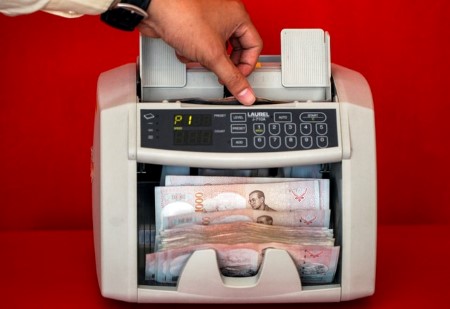




Philippines Trade Update: Trade trajectories trend along
 DOWNLOAD
DOWNLOAD

Policy Rate Updates: Double cut finale
 DOWNLOAD
DOWNLOAD

Monthly Economic Update: One for the road
 DOWNLOAD
DOWNLOAD


Foreigners exit Asian bonds for second straight month in October

Nov 16 (Reuters) – Asia ex-China bonds witnessed outflows for a second straight month in October, pressured by higher US yields and a weaker growth outlook as the region’s exports fell sharply last month.
Overseas investors sold a net USD 3.24 billion worth of bonds in India, Indonesia, Malaysia, South Korea and Thailand, after withdrawing a net USD 2.91 billion in the previous month, data from regulatory and bond market associations showed.
The US Federal Reserve has been aggressively hiking interest rates to combat sky-high inflation, raising the chances of a recession and pushing investors away from higher-risk emerging markets.
Malaysian bonds recorded foreign outflows of USD 1.32 billion, their biggest monthly net selling since March 2020. Indonesian bonds witnessed disposals of USD 1.1 billion, a little lower than the previous month’s outflows of USD 1.9 billion.
Indonesia’s central bank raised its policy rates by 50 basis points for the second month in October in an effort to curb inflation and arrest portfolio outflows.
Indian and Thai bonds also recorded foreign outflows, worth USD 432 million and USD 392 million, respectively, last month, but South Korean bonds saw small inflows.
Worsening investor woes, exports slumped in most of the region, including China, South Korea, and Taiwan, as demand from developed countries slowed.
However, most emerging market currencies have surged against the dollar this month as US inflation rose less than expected in October, raising hopes that the Fed would slow the pace of its hikes.
“The US monetary policy outlook is still the major driver of portfolio flows in Asia,” said Khoon Goh, head of Asia research at ANZ.
“Although the magnitude of future US rate hikes will likely be trimmed, the prospect of a higher terminal fed funds rate remains a headwind, though the recent softer US CPI print has provided some respite.”
(Reporting By Patturaja Murugaboopathy and Gaurav Dogra in Bengaluru; Editing by Devika Syamnath)
This article originally appeared on reuters.com





 By Reuters
By Reuters